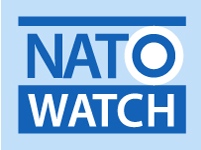This comment first appeared as an editorial in the October 2012 Observatory newsletter
Writing in the Financial Times, the French defence analyst François Heisbourg, describes the proposed merger between EADS and BAE as “a holy grail, deeply desired and long in coming”. The view from London, Berlin and Washington (and Paris, for that matter) is more mixed. At Westminster, some MPs are questioning the wisdom of handing over the ‘British defence industry’ to ‘foreign control’, especially given the Pentagon’s less than enthusiastic relationship with EADS, the Franco-German aerospace firm.
Of course, BAE Systems can’t be called ‘a national British champion’. While the ‘B’ in its name did once stand for ‘British’ and the company remains headquartered in London, BAE Systems today is a global company that assembles weapon systems from components that are manufactured all over the world. And no defence company has worked harder to become American than BAE Systems, which currently employs more US (around 38,000) than British personnel (35,000).
The crux of the matter is the extent to which the UK continues to prefer to cede or share some defence and security sovereignty with American rather than European allies. This shared sovereignty is a fact of life at policy, operational and defence industrial levels, despite the bombastic and overtly nationalistic rhetoric emanating from British ministers and defence officials. Will this be the moment when the UK decisively turns away from its ‘special’ security relationship with the US and adopts a more European outlook?
The proposed merger is certainly in keeping with NATO’s new Smart Defence initiative which encourages members to cooperate in developing and maintaining military capabilities. The alliance approved an initial package of multinational projects at its Chicago summit in May. Similarly, the EU has long sought to foster more European cross-national cooperation on defence projects. EU defence ministers agreed in November 2011 to pool resources in 11 defence fields ranging from mid-air refuelling to field hospitals. At the industrial level it is looking for companies to cooperate to plug holes left by declining military budgets, eliminate wasteful duplication and create a European aerospace giant to rival Boeing. To this end, according to SIPRI, the merged entity would become the world’s largest arms and military services company.
But we have been here before. In the 1990s there was a bold plan to combine many of Europe’s largest defence and aerospace companies into a colossus capable of competing with American rivals. It was British Aerospace—the forerunner to BAE Systems—that opted out of the plan, sold most of its civil aerospace side to the newly formed European group EADS (which went on to pursue an Airbus-driven strategy) and opted instead to focus on the US military market.
The current plan is to create a dual-listed company in which the two firms keep their separate stock market listings but pool all of their operational businesses and run them as one. The companies have combined sales of £55 billion, with products ranging from Airbus commercial planes to Typhoon warplanes and nuclear-powered submarines. The Pentagon is likely to insist that its most sensitive contracts are ring-fenced and run by security-cleared Americans, as is currently the case for BAE’s existing US-based work.
An even bigger hurdle is likely to come from US politicians reluctant to sanction contracts going to a firm that has foreign government shareholders, as is presently the case with EADS. Thus, for the merger to go ahead, several key constituencies will need to be convinced, including the shareholders of both firms and regulatory authorities in Brussels and Washington.
The merger (or even the chatter of merger) may also lead to additional European defence consolidation, especially among some of the other major players left outside of the deal, such as Thales of France and Finmeccanica of Italy. However, given the emerging down cycles in both the airliner and defence sectors, it is disappointing that this defensive corporate response is not being matched by an imaginative government led diversification strategy.
While the limited synergies between BAE and EADS may prevent large-scale merger-related redundancies, the long-term downward trend in hi-tech defence employment appears set to continue. In Britain, for example, overall defence employment was around 500,000 in the early 1990s and stands at less than 300,000 today (with only about half this number directly employed in the defence industry supply chain).
Why not look to redirect some of this highly skilled pool of engineers, technicians and scientists towards meeting the real security challenge of this century: climate change? Europe and America need to rapidly construct post-carbon economies, with the objective of zero emissions through renewable energy, energy efficiency programmes and the recycling of materials. A coordinated defence diversification strategy could help utilise sufficient resources towards socially-useful ‘green’ production on an international scale. However, Smart Defence and diversification challenge old habits and vested interests, so a concerted effort will be needed to move them both from emerging status to centre stage.
